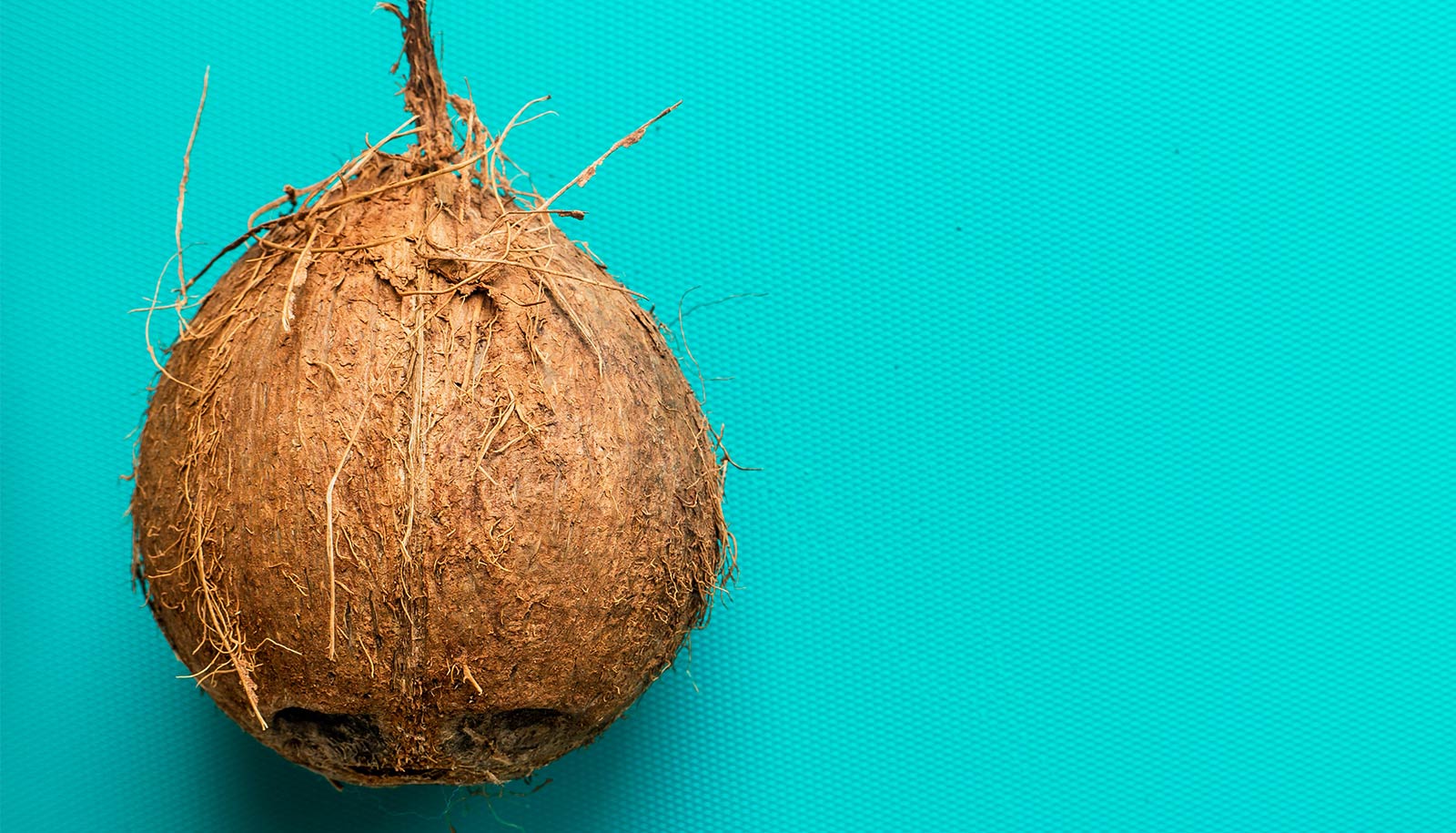
Tiny beetles that feed on fruit from the palm family may have developed their taste for coconuts long ago, according to scientists studying suspected insect damage in a 60-million-year-old fossil.
“We found this remarkable fossil coconut that has clear signs of insect tunneling,” says L. Alejandro Giraldo, a graduate student in geosciences at Penn State. “After studying the damage in detail, we were able to pinpoint the insect culprit: a group of beetles commonly referred to as palm bruchines that today still eat lots of palm fruit—coconuts included.”
The findings represent the earliest fossil evidence of seed beetles feeding on palm fruit and shed new light on the Neotropical rainforests that emerged in modern day South America following the Cretaceous-Paleogene extinction event 66 million years ago that wiped out the dinosaurs and reshaped life on Earth, the scientists say.
“These were the first Neotropical forests as we know them today,” says Giraldo. “We know these forests had similar plants compared to today, and the next step is knowing what was happening to these forests—for example how insects were interacting with the plants.”
Fossil detectives
Previous studies have focused on insect damage to fossil leaves, the most abundant plant parts found in the fossil record, the researchers say. Examples of insect damage to fruit and seeds are less common, but scientists found six suspected insect holes on a coconut fossil from a site in modern day Colombia.
The fossil contained damage to the outer and inner layers of the fruit, revealing a three-dimensional path that suggests the holes had a biological origin—like from larvae eating their way through the coconut, the researchers say.
As reported in the journal Review of Palaeobotany and Palynology, the team analyzed the number, position, and size of the holes, as well as the scar tissue left behind. They compared that with damage caused by modern insects, especially those that feed on plants from the palm family.
The damage was consistent with a subgroup of modern beetles called palm bruchines.
“There are thousands of different insect species that can feed on seeds, but not many of them feed on palm seeds, so that was the way to start,” Giraldo says. “After that it was doing a lot of detective work, really digging into the literature and studying different morphological features in terms of how this damage occurs. And it paid off.”
Plant control
This kind of relationship between specific plants and insects—called specialized interactions—plays an important role in creating and maintaining plant diversity in modern Neotropical rainforests. By eating and destroying seeds, these highly specialized insects help prevent any one group of plants from dominating the landscape.
The findings suggest that palm bruchines have consistently eaten palm fruits for at least 60 million years and that the specialized interactions that define modern-day Neotropical rainforests have occurred through geological time, the scientists say.
“This is something that we see 60 million years ago, and it’s something that is still occurring today,” Giraldo says. “Our contribution is that we pinpoint this specific group of insects as the culprit, and that group is still living today and attacks the same coconuts and same palms as it did in the past.”
Additional coauthors are from the Smithsonian Tropical Research Institute, the Field Museum of Natural History in Chicago, and the Smithsonian Institution. The National Science Foundation funded the work.
Source: Penn State